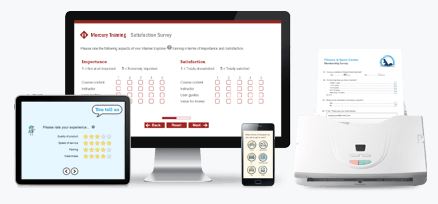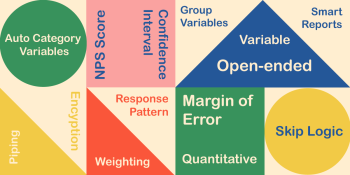When working in market research, get to know your survey terminology
Whether you are a seasoned market researcher with extensive knowledge of survey methodology, a beginner designing your first survey, or a new market research analyst, some of the terminology used can be a little confusing and it takes some time to comprehend. Here are some commonly used survey research terms and their definitions.
Survey Terminology
Survey. A research tool that includes at least one question which is either open-ended or close-ended and employs an oral or written method for asking these questions. A survey is the entire research project, including the questionnaire itself. However, survey is used interchangeably with questionnaire, referring to the tool used within the research project.
Quantitative. (or Quant.) Refers to quantitative research, or traditional research in which answers are coded and turned into numeric data, then analyzed statistically.
Qualitative (or Qual.) Qualitative research is administered in the form of open-ended questions (comments), insight & data gathered from focus groups, and anything that focuses on gathering extended comments and stories from respondents as opposed to multiple choice questions, rating scales, etc.
QRE. Is an abbreviation for the term Questionnaire.
Participants. The people you invite to take your questionnaire.
Respondents. The people who respond to a questionnaire.
Completes. Responses recorded as successfully completing the entire questionnaire.
Incompletes. Responses recorded as not completing the entire questionnaire. Incompletes can come from respondents who stop anywhere within the questionnaire, but they do not reach the “submit” button at the end of the questionnaire. (Advanced survey software, such as Snap Survey Software, has the ability to record all answers, regardless of whether a respondent completes a questionnaire.)
Drop-outs. Respondents who suddenly stop completing the questionnaire. This is different from respondents who were routed to the end of the questionnaire due to logic (routing).
Logic. Instructions that are used in the survey design phase to route respondents to particular questions or question sets within the questionnaire. For example, skip logic is used to route respondents around particular questions that do not apply to them. Branching logic is used to route respondents to different locations in the questionnaire based on their responses to a particular question.
Open-ended questions (or Open-end(s)). Questions in a questionnaire that ask the respondent for a comment.
Mean. The average value.
Median. The center value.
Mode. The most frequent value.
Multi-modal methods. A survey research approach that employs a variety of methods. In other words, the way the questionnaire is administered – online, paper, mobile, or kiosk. Combining multi-modal methods gives a mixed-mode survey. (Design mixed-mode surveys with Snap Survey Software.)
Fielding. Administering the questionnaire to gather responses.
Population. The target group under investigation. The population is the entire set under consideration. Samples are drawn from populations.
Sample. The population researched through your survey.
Random sampling. The process used to draw a sample of a population strictly by chance, yielding no discernible pattern beyond chance.
Response Rate. The actual percentage of questionnaires completed and returned.
What other survey terminology would you add to this list? Let us know in the comments section below.



